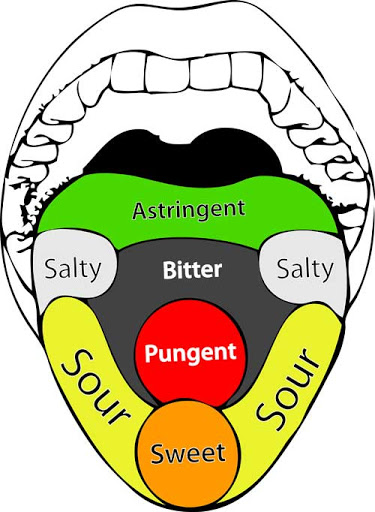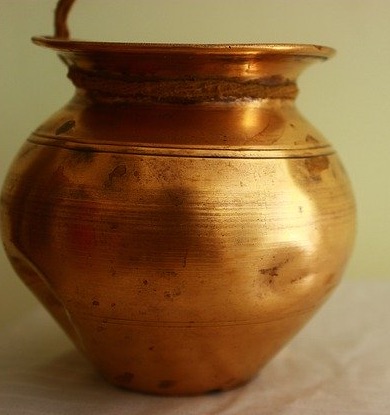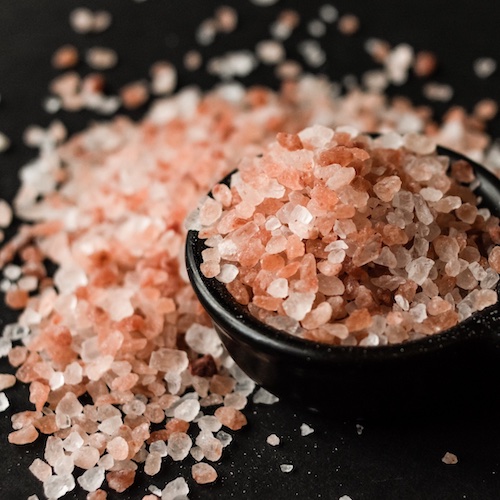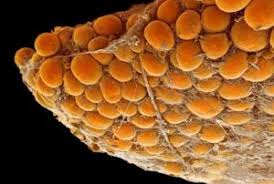Panchakarma treament is a detoxification therapy which is used in ayurveda to treat chronic diseases. It is also recommended for regular detoxification of normal persons.
Table of content
Why Panchakarma Treatment is needed ?
Steps Involved in Purification Therapy
Purva Karma (Preparatory Methods)
Pradhana Karma (Main purification methods)
Pashchat Karma (Post Procedure Recovery or rehabilitation)
Who Should not Undergo Panchakarma therapy ?
What are the Benefits of Panchakarma Therapy ?
Related article
Ayurveda Liver Detox – An Easy Liver Cleansing Guide
What is Panchakarma Therapy?
Panchakarma therapy is also used as a purification therapy to cleanse the body before starting a treatment. A diseased body can be compared to a soiled cloth, which can not be colored as we desire. Hence to attain the maximum benefits, the body has to be purified or cleaned before starting the treatment. The cleared channels help medicines to penetrate the deeper tissues. This body cleansing is attained through 5 main processes and many preparatory procedures. Hence name Pancha Karma (Pancha =5, Karma = Process)
Why Panchakarma Treatment is needed?
According to Ayurvedic texts, our body is crisscrossed by srotas or channels or tube-like structures. This network contains both microscopic and macroscopic channels. ( Digestive system, nervous system, circulatory system, etc are a few examples of these channels). Innumerable physiological process like breathing, blood circulation, secretions of enzymes, hormones, etc, the flow of signals, supply of nutrients, filtration of toxins, excretion of waste, etc is aided by these tubular structures.
Diseases occur when toxins get accumulated in the body and clog these channels. An unhealthy diet, lifestyle, stress, changes in the environment, etc lead to the accumulation of toxins in the body. These accumulated toxins have to be expelled in order to keep our bodies healthy. Through panchakarma therapy, these toxic clogs are removed to normalize the physiological process. Hence panchakarma therapy is called detoxification therapy. Panchakarma therapy can be administered to a normal person to prevent diseases and keep his body healthy. The ideal season to expel toxins through this therapy is the monsoon or rainy season or Varsha rutu.
Steps involved in Purification Therapy.
The detoxification process contains three steps
1. Purvakarma (preparatory procedures) – Preparations that have to be done before the detoxification
2. Pradhanakarma (Main Procedure) – The main detoxifying process
3. Pashchat karma (Recovery or rehabilitating procedures) – Rehabilitating the diet and lifestyle after the detoxification process.
Purvakarma (preparatory procedures):
These steps are adopted to soften the channels and toxins so that the toxins can get detached and eliminated easily during the main detoxifying process. The hard toxic clogs are made to get loosened by increasing body fire or agni. Medicines are administered internally for this purpose. This process is called “deepana and pachana” in Ayurveda. ( the duration of this process is 3-5 days depending on the conditions and diseases)
Later whole body is oleated internally and externally with medicated oil ( like ksheerabala oil ) or ghee. This process is called “Snehana”. Snehana is of two types. Internal oleation and External oleation.
Internal Oleation
Internal oleation is done by administering small quantities of medicated oil or ghee internally. The duration of internal oleation , quantity, and type of medicated oil or ghee is determined by the physician after analyzing the body constitution of the patient. The patient has to eat liquid food or light food on the day prior to internal oleation. After consuming the medicated oil or ghee the patient is encouraged to sip warm water frequently. When medicated oil or ghee is completely digested, the patient is advised to consume light foods like yavagu or rice gruel.
External oleation
External oleation is done after the completion of internal oleation.. The whole body or body part is massaged with medicated oil. Few types of external oleation are used as treatment methods. They are-
1. Abhyanga ; Massaging the whole body
2. Lepa – Smearing medicated oil and herbs
3. Mardana – Kneading the body parts with fingers and fists.
4. Padaghata – Tampling the body with the foot.
5. Gandusha – The mouth is filled with oil and is retained for a longer period of time.Also known as oil pulling.
6. Parisheka (Pizhichil ) – The warm medicated oil is poured continuously over the entire body for an extended period of time.
Soon after the oil massage, the body or body part is exposed to heat through a steam bath or other heating methods according to the physician’s choice. This process of exposing the body to heat is called swedana or sweating. Both snehana and swedana help to soften the channels and toxin clogs. Elimination of toxins becomes easy when channels are soft and toxins are loose.
Pradhana Karma : (Main Procedures)
This is the main detoxifying process. The softened and loosened toxins are expelled from the body by five methods. Considering these five major detoxifying methods the whole process is named “Panchakarma” (Pancha = 5, Karma = process ).
1. Vamana (through Emesis),
2. Virechana (Purgation),
3. Niruha basthi Basthi (enema with herbal concoctions ),
4. Anuvasana basthi (enema with medicated oil)
5. Nasya (nasal drops) and Raktamokshana (Blood letting).
Physicians can choose any of these detoxifying methods according to the disease and prevalence of doshas.
Vamana (Purifying through emesis)
Vamana means expelling doshas through oral route . It is emesis therapy. Before inducing vamana the toxins and vitiated doshas are brought to amashaya or stomach with various preparatory methods like snehana and swedana. Emesis should never be induced on empty stomach. Vamana therapy is conducted in the early hours of the day when Kapha dosha is dominant. Vitiated doshas and accumulated toxins are expelled through methodically induced emesis. The patient is required to be relaxed calm and devoid of any mental stress throughout the therapy. After emesis therapy, the patient is gradually rehabilitated to a regular diet and lifestyle.
Detoxification through vamana is suggested in diseases that mainly involve Kapha dosha. The disorders like cough, asthma, indigestion, poisoning, repeated attacks of tonsillitis, nasal discharge, tuberculosis, etc are treated with Vamana therapy. Children and the elderly are not to be subjected to this therapy. The same holds good for obese and weak persons. After vamana, loud speech, overeating, continued sitting, too much walking, anger, anxiety, coitus, suppression of natural urges have to be avoided.
Virechana: (Purifying through Purgation)
Virechana is expelling the vitiated doshas and toxins through purgation. This therapy can be conducted as an individual detoxification therapy or as a follow-up therapy next to vamana to ensure complete detoxification. Virechana is a nonpainful and easiest procedure. Complications are usually very rare in this therapy. This detoxification method helps to expel toxins and vitiated doshas from blood (rakta) , liver, and intestines. Usual panchakarma preparatory methods like snehana and swedana are completed before inducing purgation. Virechana is induced by administering herbal purgatives in the morning between 8 am to 9 am, when pitta dosha is dominant. The patient is made to drink warm water repeatedly as he passes stools. The patient is later rehabilitated to his regular diet and lifestyle.
This therapy is suggested for disorders in which pitta dosha is prominent. Skin diseases, jaundice, constipation (Read Ayurvedic Remedies for Constipation), headache, (Read Ayurvedic Home Remedies for Headaches), fistula, Piles (hemorrhoids), intestinal parasites, herpes, anemia, edema are a few of many diseases in which Virechana is the chosen as detoxifying therapy. Contraindications for virechana therapy are ulcerated rectum, pregnancy, obesity, diarrhea, cardiac ailments, tuberculosis, children, and elderly
Basthi Karma : (Purification through Enema)
Basthi karma is expelling body toxins and vitiated doshas by introducing medicated liquids or oils through the anus, urethra, or vaginal canal. Basthi means urinary bladder. In ancient times the enema apparatus used to be made up of the urinary bladder of animals. Hence this detoxification process is called Basthi karma.
Basthi karma is mainly used in vata dosha dominant diseases.
Basthi karma is usually performed after the first two detoxification processes namely vamana and virechana or only after virechana. After completing preparatory procedures (snehana, swedana), the patient is allowed to lie on his left side and medicated oil or herbal decoction is administered under hygienic conditions. The patient has to lie on his back for 10-15 minutes after basthi is given.
There are two types of Basthi
- Anuvasana basthi and
- Niruha basthi.
Anuvasana basthi :
In anuvasana basthi medicated oil is introduced through the anus, immediately after the consumption of food. There will be no harm even if medicated oil remains inside the colon for a long time. This type of basthi nourishes and strengthens the body.
Niruha basthi:
In this type of basthi (also known as asthapana basthi) an enema of herbal decoction is given. Niruha basthi is administered on empty stomach. The administered decoction has to come out from the body within 45 minutes. The expelled herbal decoction brings out toxins and vitiated doshas along with it. Anuvasana basthi and Niruhabasthi are given alternatively. The patient is advised to take bath after herbal decoction is expelled. Unlike vamana and virechana , strict diet and lifestyle rehabilitation are not required after basthi karma, as basthi do not cause irritation in digestive system. But it is necessary to take light and nourishing food.
Introducing medicated liquids and oils through the urethra in men or through the vagina in women is called uttara basthi.
Basthi karma is usually recommended in
1. Diseases involving joints like arthritis, gout, etc,
2. Neuromuscular problems
3. Osteoporosis
4. paralysis
5. Low back pain
6. Obesity
7. Disorders of intestines
8. Menstrual problems of women. This is also used in ayurvedic treatment for PCOS or PCOD
Benefits of basthi:
- Basthi improves vision,
- This can be used as ayurvedic treatment for obesity as it helps in weight loss, increases weight (Brumhana therapy) nourishes emaciated persons, slows down the aging process, and boosts health.
Nasya karma: (Detoxification through nasal drops)
Nasya karma means administering drops of herbal liquid preparations or medicated oils through the nose. This detoxification method is also known as Shirovirechana. Vitiated doshas and toxins which are accumulated in the head and neck region are expelled through the nose and mouth along with nasal and oral secretions. As a preparatory procedure, the head and face of the patient are massaged with medicated oil (Administering medicated oil before nasya karma is not advised) and a steam bath is given only to the head and neck region. The patient is made to sleep on his back with his foot end elevated and head reclined. The medicated liquid or oil is administered in drops to both nostrils consecutively. The patient is advised to inhale the medicine slowly. After nasya karma the patient must avoid talking loudly, getting angry, and laughing.
According to the type of medicine used, the Nasya karma is divided into four types. They are
- Navana Nasya : In this type drops of medicated oil is used.
- Avapidana Nasya: Here squeezed juice of herbs is used.
- Dhumapana or pradhamana nasya : Fine powder of herbs are made to inhale through an apparatus called “nadi yantra” ( a tube like apparatus)
- Dhuma nasya : Fumes of medicinal herbs are inhaled in this type of nasya.
Nasya Karma is indicated in tonsillitis, stiff neck, stiff jaw, headache, sinusitis, stammering, hoarseness of voice etc. Nasya Karma should not be performed when a patient has indigestion, consumed alcohol, taken head bath, and tiered pregnancy.
Paschat Karma: (Post Procedure Recovery or rehabilitation)
A strict diet and lifestyle procedure has to be followed through out Panchakarma treatment. The rehabilitative procedures to bring back the diet and lifestyle to normal are considered as “paschat Karma”. In this stage the digestion power is brought back to normalcy. Medicines are administered to rejuvenate the body or to treat the disease.
During panchakarma treatment, the following rules have to be strictly followed.
- 1. One has to use only warm water to drink, bathe, and for other activities.
- 2. Person who is undergoing panchakarma therapy can not indulge in sex.
- 3. Sleeping in the daytime is contraindicated.
- 4. Natural urges should not be controlled.
- 5. Exposures to extreme temperatures or weather conditions have to be avoided.
- 6. Keeping awake at night is not advisable
- 7. Foods that cause indigestion can not be consumed.
- 8. Exercise and mental stress have to be avoided.
Who Should not Undergo Panchakarma therapy ?
• Women during menstrual periods
• Lactating mothers
• Cancer of the Lungs or Testicles
• Melanoma
• HIV or AIDS
• Extreme Obesity
• Lympho-Sarcoma
• Hypertension or high blood pressure
• Congestive Heart Failure
• Emaciation
• Any Active Infectious Disease
• Pregnancy
• Angina Pectoris
What are the Benefits of Panchakarma Therapy
• Toxins are eliminated from body. Read Read Ayurveda Liver Detox – An Easy Liver Cleansing Guide
• Doshas get Balanced.
• Stress is reduced and the body gets relaxed.
• Slows ageing process and increases the lifespan.
• Increases glow and luster of skin.
• Boosts body immunity and body energy level.
• Enhances strength, energy, vitality, and mental clarity
• Reduces dependence on alcohol, tobacco, and drugs.
• Help to implement a healthy diet and lifestyle.
Important Note
All panchakarma or detoxification therapies have to be conducted strictly under the supervision of well-experienced qualified Ayurvedic doctors.
Author – Dr.Savitha Suri. Consultant ayurvedic physician.
Call us at +91 9945995660 / +91 9448433911






